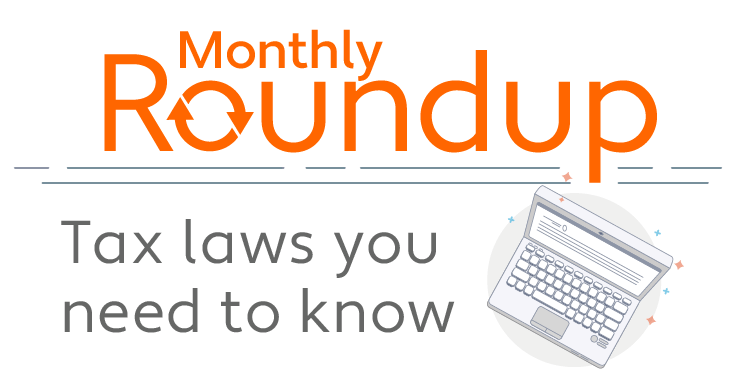
Communications tax is not like sales tax. Here’s what you need to know.
Has your business recently discovered it’s liable for communications tax? If so, you’re far from alone. Across sectors, countless telecommunications companies are learning that new technologies can subject them to additional regulatory fees and special taxes. Now, the question is: How will your company stay compliant if it’s taxed with higher complexity?
The answer may not be as simple as you’d initially think. Determining a communications tax rate can be very different from calculating a sales and use tax rate. And depending on the number of geographic markets your company serves, it can get highly complex for your tax and revenue department.
We’ll answer the following common questions about communications tax:
What is communications tax?
Unlike sales tax, which is often based on relatively straightforward calculations, communications tax can involve many complicated twists when determining the proper tax rate.
And contrary to what the name implies, the charges aren’t limited to just taxes. The term “communications tax” often refers to a multitude of federal government charges, state and local taxes, fees, and regulatory contribution charges. It’s more complicated than state sales tax and includes everything from long-standing telecommunications tax to relatively new VoIP and streaming taxes, encompassing a host of regulatory fees from federal and local jurisdictions, public utility fees, emergency fees, and more.
Depending on the types of communications you provide customers or that your products access, you might be liable to collect and remit taxes and fees including 911 and 988 fees, the Federal Universal Service Fund (FUSF) fee, telecommunications relay services (TRS) fees, utility user tax (UUT), and the communications services tax (CST).
Why is communications tax so complicated?
All those taxes and fees must be built on top of an already complex foundation of sales tax. You’ll need to figure out which federal, state, and local jurisdictions require what types of communications tax, including those triggered across your supply chain. You’re also responsible for presenting communications tax clearly on each customer’s bill.
Because federal, state, and local jurisdictions take their own approach to applying and collecting communications tax revenue, each line item on a single statement could be subject to its own unique combination of taxes and fees. And unlike sales tax, there’s no way to simply tally up the total and then calculate tax.
These are the kinds of scenarios businesses face after adding voice, video, or connectivity to products or services for their customers. And it’s up to the business to correctly identify which communications taxes and regulatory fees must be imposed. For a large company with a national footprint, that could mean tracking as many as 60,000 state and federal tax revenue jurisdictions across North America to stay current on hundreds or even thousands of compliance requirements. And because rules and rates change constantly, they need to be continually monitored for updates.
What services are taxed for communications?
The application of communications tax has changed quite a bit in recent history. While most of these taxes and fees were originally intended for traditional voice, long distance, pay TV, and network service companies, many are now being imposed on a wide range of new technology services.
SaaS and UCaaS platform companies, managed services providers, streaming platforms, and companies that provide mobile phones, satellite television, VoIP services, and IoT connections are all potentially subject to pay communications tax at the federal, state, and local levels, as are many hosting, SDN, cloud companies, and similar services.
How do I manage tax when billing customers for telecommunications?
As communications tax authorities work to catch up with the pace of technology innovation, there is some confusion for providers. If your company is selling the latest and greatest products and services, there may be controversy about their inclusion in various tax bases. And if you’re still relying on a sales and use tax engine alone, you may be at risk. Staying up-to-date on the many complexities of communications tax compliance will require specialized software and billing solutions for communications tax.
As you begin to assess whether a specific communications tax or fee applies to your products and services, you’ll soon discover there’s more than just those taxes and fees to worry about. In many instances, how you apply and collect tax will vary based on your business model, pricing strategies, merchandising methods, billing services, and more.
For example, let’s say you provide internet access services, long distance service, consumer streaming services, voice and data service for mobile phones, and cable and video service. Each time you bundle products together, you open the door to a wide range of complex tax calculations that your business must bill, collect, and report accurately.
Companies that provide services like voice calling, SMS, video calling, and click-to-call could each be subject to liability for their own separate set of communications taxes across jurisdictions. And in some jurisdictions, including just one communications-taxable service when a customer is billed can subject the entire bundle to communications tax.
When adding fees to a customer bill, businesses may be subject to tax on tax complexities. These can come into play when a regulatory fee is added as a surcharge to the services a company provides, which many states view as yet another taxable receipt. These additional communications tax and fee amounts often need to be calculated to the diminishing penny — and can get very confusing for any tax department, very fast.
Where can I find help managing taxes for telecommunications?
Sales and use tax engines are not built to handle the complex tax and fee needs of telecommunications providers. And each time your company returns filing is limited to sales and use tax, it increases your risk of a potential communications tax audit resulting in hefty fines and penalties.
If your business still serves customers in only a handful of local markets, it may be possible to manage your communications tax compliance risk on your own — for a while, at least. However, many billing systems and sales tax engines can’t handle the compliance needs of information services and telecommunications businesses.
For this reason, many businesses in the communications tax bubble are turning to specialized software to automate calculations, streamline billing, and generate accurate returns, based specifically on how communications are taxed. In many scenarios, tax automation systems that unify the abilities to calculate sales and use tax as well as specialized communications taxes become crucial.
Avalara also offers a comprehensive solution for managing communications tax. To find out if it’s right for your business, contact us today.

Avalara Tax Changes 2024: Get your copy now
Stay ahead of 2024’s biggest tax changes with this comprehensive, compelling report covering seven industries.
Stay up to date
Sign up for our free newsletter and stay up to date with the latest tax news.












